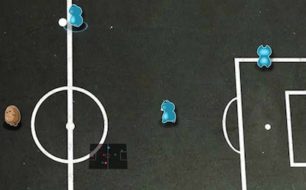
The team need to deploy the carcasses over water bodies right before dusk to avoid other nearby animals taking the bait.

“You are lugging all the gear into the field. On the ground the DBCA technical officer, Miles Bruny, says “it is a bit of a gruesome job”.īefore bait deployment along the banks, he says there are hundreds of toads to process, which includes gutting them of their toxic parts, including the stomach and eggs in the females, then injecting them. Traditional methods of invasive species management include the removal of the animals from the environment by hand, or by fencing them out.īut with its females able to lay 30,000 eggs twice a year, Ward says “none of that has really worked to slow the invasion or decrease the number of toads in the environment”. Kristen Andrews, Bunuba ranger assistant, describes it as mucking up the whole food chain: “If the croc dies, the catfish eat everything, and there is nothing left for the barramundi, so we will lose out on the barramundi.” “It comes to that time of the season where we would be looking to hunt certain types of animals, but because they are eating cane toads … there aren’t many around any more,” Bunuba ranger trainee, Lionel Marr, says. In Aboriginal culture, freshwater crocodiles carry story, totemic and ceremonial importance. “If you mess with one component, it sends ripples through.” “Any ecosystem is a web that exists in a delicate balance,” she says. Sign up to receive an email with the top stories from Guardian Australia every morning Once the Kimberley is swamped, Ward explains that a potential drop in the apex predator population is cause for concern. The toads are expected to hit the town of Derby this year, and by 2025 they may have covered Broome. “We are seeing this impact play out again and again as cane toads move into new areas.” Last year, 60 freshwater crocodiles were found poisoned and killed by cane toads at Danggu Gorge in WA’s Kimberley region. Native apex predators that feed on frogs, such as freshwater crocodiles, iguanas, snakes and quolls, attempt to eat the toads and are killed by their toxins. Carrying foreign toxins, they began spreading from northern to Western Australia. Photograph: DBCAĬane toads were introduced to Australia almost 100 years ago as a method of crop control in Queensland.

DBCA Parks and Wildlife officers and Bunuba Rangers prepare the cane toad baits for the conditioned taste aversion training.


 0 kommentar(er)
0 kommentar(er)
